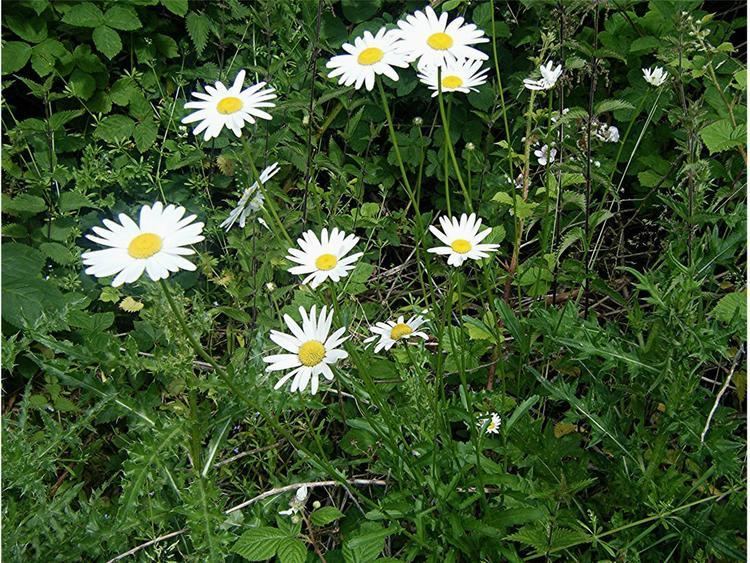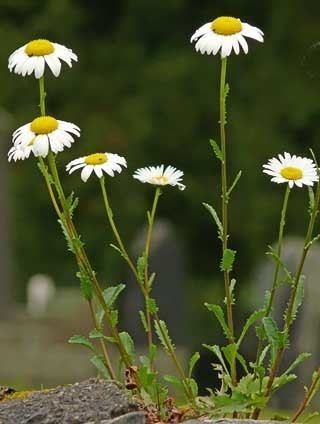Higher classification Leucanthemum | Genus Leucanthemum Rank Species | |
 | ||
Similar Harebell, Yarrow, Meadow buttercup, Cowslip, Red Clover | ||
Plant portrait oxeye daisy leucanthemum vulgare
Leucanthemum vulgare, the ox-eye daisy, or oxeye daisy, is a widespread flowering plant native to Europe and the temperate regions of Asia and an introduced plant to North America, Australia and New Zealand. It is one of a number of family Asteraceae plants to be called a "daisy", and has the additional vernacular names common daisy, dog daisy and moon daisy.
Contents
- Plant portrait oxeye daisy leucanthemum vulgare
- Invasive species oxeye daisy leucanthemum vulgare
- Description
- Food
- Cultivation
- Invasive species
- Allergies
- References

L. vulgare is a typical grassland perennial wildflower, growing in a variety of plant communities including meadows and fields, under scrub and open-canopy forests, and in disturbed areas.

Leucanthemum is from the Ancient Greek λευκός (leukós, "white") and ἄνθος (ánthos, "flower"). Symbolic meaning of Oxeye daisy: Patience (Plant symbolism)

Invasive species oxeye daisy leucanthemum vulgare
Description
Leucanthemum vulgare is a perennial herb one to three feet high by 1 foot (0.30 m) wide. The stem is mostly unbranched and sprouts laterally from a creeping rhizomatous rootstock.

The leaves are dark green on both sides. The basal and middle leaves are petiolate, obovate to spoon-shaped, and serrate to dentate. The upper leaves are shorter, sessile, and borne along the stem.

L. vulgare blooms from late spring to autumn. The small flower head, not larger than 5 centimetres (2.0 in), consists of about 20 white ray florets that surround a yellow disc, growing on the end of 1 to 3 ft (30 to 91 cm) tall stems. The plant produces an abundant number of flat seeds, without pappus, that remain viable in the soil for 2 to 3 years. It also spreads vegetatively by rhizomes.
Food
The unopened flower buds can be marinated and used in a similar way to capers.
Grieve's Modern Herbal (1931) states that "The taste of the dried herb is bitter and tingling, and the odour faintly resembles that of valerian."
Cultivation
Leucanthemum vulgare is widely cultivated and available as a perennial flowering ornamental plant for gardens and designed meadow landscapes. It thrives in a wide range of conditions and can grow in sun to partial shade, and prefers damp soils. There are cultivars, such as 'May Queen' which begins blooming in early spring.
Invasive species
Leucanthemum vulgare became an introduced species via gardens into natural areas in parts of Canada, the United States, Australia, and New Zealand, where it is now a common weed. In some habitats it is an invasive species forming dense colonies displacing native plants and modifying existing communities, and is classified as a noxious weed.
It is difficult to control or eradicate, since a new plant can regenerate from rhizome fragments and is a problem in pastures where beef and dairy cattle graze, as usually they will not eat it, thus enabling it to spread.
Ox-eye daisy is a host for several viral diseases affecting crops.
Allergies
Allergies to daisies do occur, usually causing contact dermatitis.
